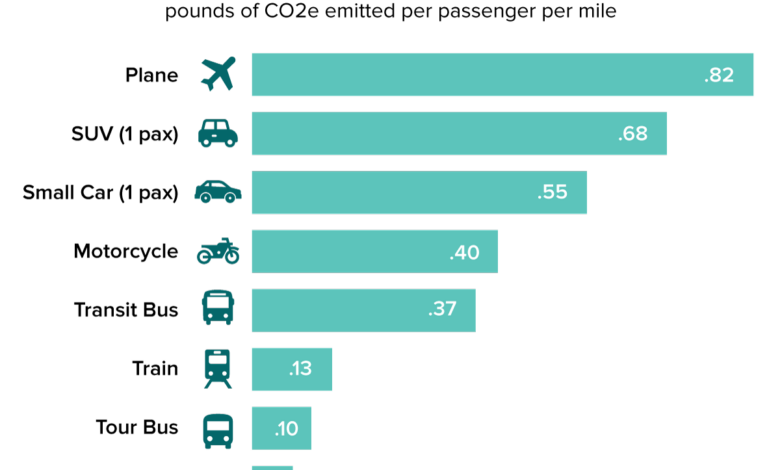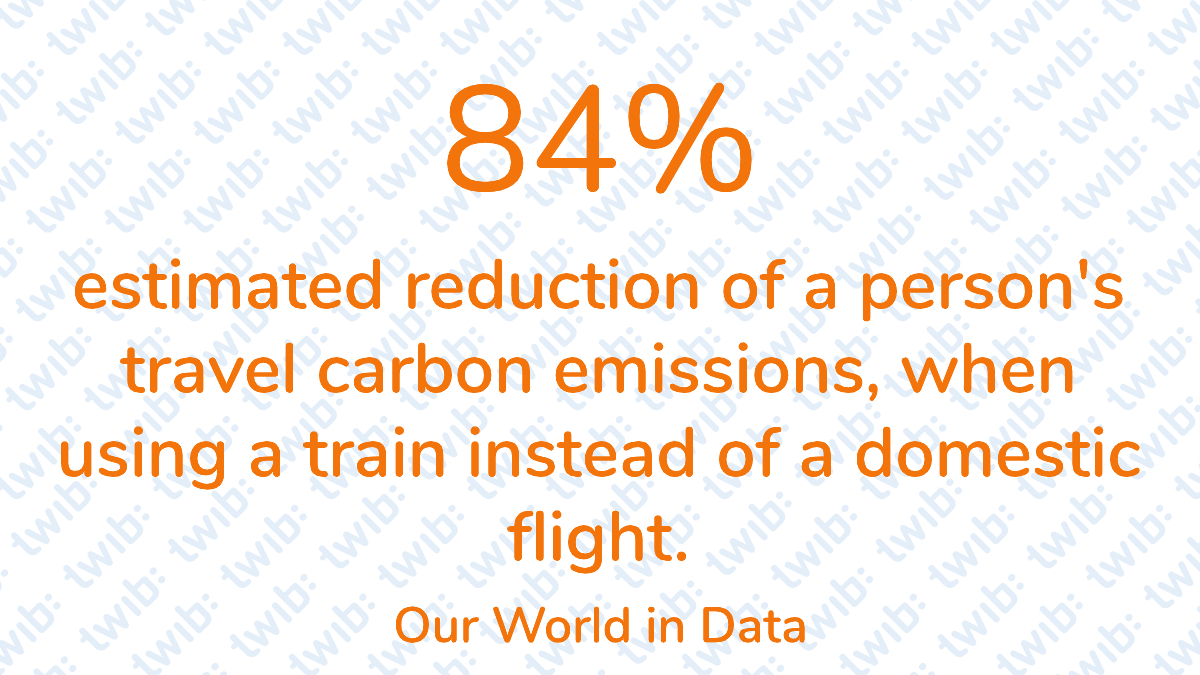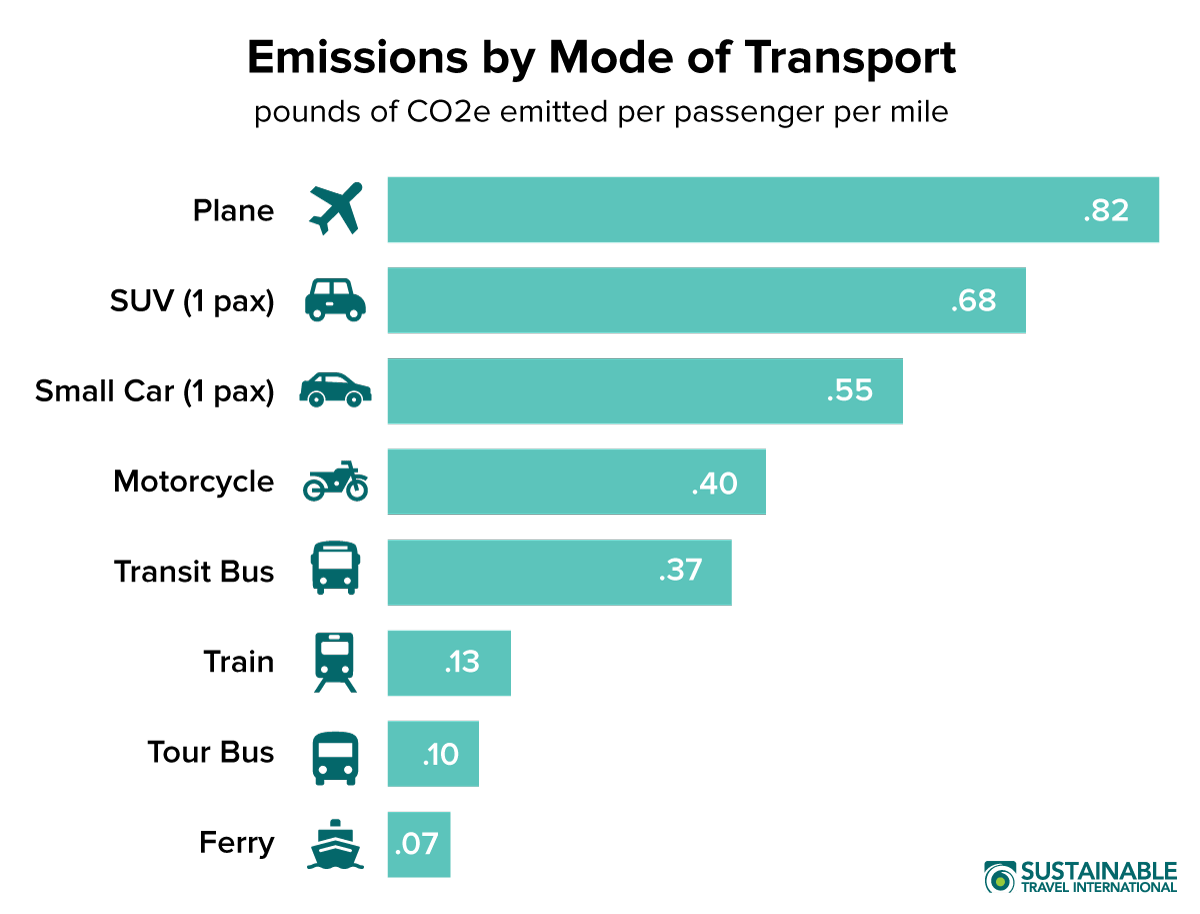
Can Destinations Solve Plane Emissions?
Can destinations offer the solution for plane emissions? This compelling question delves into the multifaceted strategies destinations can employ to mitigate the environmental impact of air travel. From innovative transportation options to sustainable infrastructure projects, and public awareness campaigns, we explore a spectrum of possibilities.
The escalating concern over plane emissions necessitates a comprehensive approach. This exploration examines the role of destinations in promoting sustainable tourism, encouraging eco-friendly practices, and fostering international cooperation to reduce the carbon footprint of air travel.
Alternative Transportation Options
Sustainable tourism relies heavily on reducing the environmental footprint of travel. One key area for improvement is transportation. Destinations can actively encourage tourists to choose eco-friendly modes of transport, fostering a more responsible and environmentally conscious experience. This approach benefits both the environment and the local community by promoting healthier lifestyles and supporting local businesses.
Sustainable Transportation Options for Tourists
Destinations can offer a range of sustainable transportation options to attract tourists. These options encompass various modes, each with its own set of environmental impacts and infrastructure requirements. Electric bicycles, e-scooters, and electric vehicle rentals are excellent choices. Walking and cycling tours are also popular, and well-maintained pedestrian walkways and bike paths are essential for these options.
Infrastructure Needed to Support Sustainable Transportation
Adequate infrastructure is crucial for the successful implementation of sustainable transportation options. Charging stations for electric vehicles are vital for supporting electric car rentals. Well-marked and maintained bike lanes and pedestrian pathways are essential for encouraging walking and cycling. Public transportation systems that integrate electric buses and trains can further reduce emissions. Furthermore, dedicated parking areas for bicycles and electric vehicles are essential for convenient and safe parking.
Encouraging Tourists to Use Sustainable Transportation
Incentivizing tourists to use sustainable transportation options can significantly increase their adoption. Discounts on transportation passes or rentals, free bike rentals, and promotions highlighting the environmental benefits are effective strategies. Partnerships with local businesses that offer incentives for eco-friendly transport can create a positive feedback loop. For example, hotels could offer discounts to guests who choose to use electric vehicle rentals or cycle to attractions.
Environmental Impact Comparison of Different Transportation Methods
The environmental impact of different transportation methods varies considerably. Electric vehicles, bicycles, and walking generate significantly lower emissions compared to cars or taxis. The environmental impact also depends on the energy source powering the vehicles. For example, electric vehicles charged with renewable energy sources have a much smaller environmental footprint than those charged with fossil fuels. Walking and cycling produce zero emissions.
Potential Benefits and Drawbacks of Each Alternative
Electric vehicle rentals offer a convenient way to explore destinations, but the range and charging infrastructure are crucial factors. Bicycles and walking are excellent for exploring local areas, but they may not be suitable for longer distances or carrying heavy luggage. Public transport can offer a cost-effective solution, but routes and schedules may not always align with tourist itineraries.
Table: Transportation Options, Environmental Impact, and Required Infrastructure
| Transportation Option | Environmental Impact | Required Infrastructure |
|---|---|---|
| Electric Vehicle Rental | Lower emissions if charged with renewable energy; higher if charged with fossil fuels. | Electric vehicle charging stations, parking areas. |
| Bicycle Rental | Zero emissions. | Dedicated bike lanes, bike parking, bike maintenance facilities. |
| Walking | Zero emissions. | Well-maintained pedestrian walkways, accessible routes. |
| Public Transport (e.g., Electric Buses/Trains) | Lower emissions if powered by renewable energy. | Electric bus routes, train stations, well-connected networks. |
| Taxi/Car Rental | High emissions. | Parking areas. |
Destination Emission Reduction Strategies

Reducing emissions from tourism destinations is crucial for environmental sustainability. While air travel contributes significantly, destinations hold the power to implement impactful changes that minimize their overall carbon footprint. This involves a multifaceted approach, encompassing policy changes, infrastructure improvements, and shifts in consumer behavior. By proactively addressing emissions, destinations can ensure a more sustainable future for both tourists and local communities.
While destinations like Las Vegas might seem worlds away from solving plane emissions, thinking about experiences like a Caesars Palace residency for the who caesars palace residency for the who highlights a crucial point. Could encouraging more luxurious, and potentially less frequent travel, towards destinations offering truly unique experiences, actually help reduce air travel overall? Maybe it’s not about eliminating planes entirely, but shifting travel habits to more sustainable options.
Policies and Regulations for Emission Reduction
Destinations can enact policies that directly target emissions. Carbon taxes, for instance, can incentivize businesses and residents to adopt cleaner practices. These taxes can be calibrated to reflect the environmental impact of different activities, encouraging a gradual shift towards lower-emission options. Regulations on vehicle emissions, particularly for taxis, rental cars, and public transport, can also dramatically reduce the amount of greenhouse gases released.
Specific regulations can include emission standards, mandatory use of electric or hybrid vehicles, and even limitations on the number of private vehicles in certain zones.
Role of Local Governments in Sustainable Tourism
Local governments play a pivotal role in fostering sustainable tourism. They can incentivize the adoption of eco-friendly practices by businesses, potentially through tax breaks or subsidies for renewable energy investments. Creating designated sustainable tourism zones or developing comprehensive sustainability plans can also be instrumental. Further, governments can invest in public transport infrastructure, encouraging the use of bicycles and walking.
They can promote awareness campaigns to educate both residents and tourists about sustainable practices.
Encouraging Eco-Friendly Practices in Businesses
Incentivizing businesses to adopt eco-friendly practices is vital for overall destination sustainability. This can be achieved through various means, including offering tax credits for energy-efficient equipment or promoting the use of renewable energy sources. Sustainable certifications can help distinguish eco-conscious businesses, encouraging tourists to choose them. Destinations can also collaborate with businesses to implement shared sustainability initiatives, such as waste reduction programs.
Educating Tourists about Sustainable Practices
Educating tourists about sustainable practices is essential for changing behavior. This can be achieved through informative signage, interactive displays in tourist centers, and partnerships with tour operators. Destinations can provide clear guidelines on responsible consumption, waste management, and energy conservation. They can also offer workshops and educational programs on sustainability.
Utilizing Renewable Energy Sources
Utilizing renewable energy sources is a significant step towards reducing emissions. Destinations can invest in solar, wind, or hydro power to meet their energy needs. Transitioning to renewable energy sources not only reduces carbon emissions but also lowers operating costs in the long run. By promoting energy efficiency and using sustainable energy sources, destinations can create a more sustainable and resilient environment for all.
Comparison of Emission Reduction Strategies
| Strategy | Description | Effectiveness | Examples |
|---|---|---|---|
| Carbon Tax | Incentivizes businesses to reduce emissions. | High, if implemented correctly. | Many European countries use carbon taxes on fuel. |
| Emission Standards for Vehicles | Reduces emissions from transportation. | High, particularly when enforced. | California’s stringent emission standards for cars. |
| Renewable Energy Investment | Reduces reliance on fossil fuels. | High, with ongoing maintenance and upgrades. | Iceland’s significant use of geothermal energy. |
| Sustainable Tourism Certifications | Incentivizes eco-friendly practices in businesses. | Moderate to High, depending on the program. | LEED certifications in the US. |
Technological Innovations for Emission Reduction
Beyond alternative transportation and destination strategies, groundbreaking technological advancements hold immense promise for reducing airplane emissions. These innovations, often complex and costly to implement, represent a significant step towards a more sustainable aviation future. From novel engine designs to innovative materials, the potential for substantial emission reductions is real, though challenges remain.The aviation industry faces a unique challenge in reducing emissions.
Traditional methods of reducing emissions, such as improving fuel efficiency, are often constrained by the fundamental physics of flight. New technologies, however, offer the possibility of fundamentally altering how airplanes operate, potentially achieving significant emission reductions without sacrificing performance.
Examples of New Technologies, Can destinations offer the solution for plane emissions
Several promising technologies are emerging to address airplane emissions. These include advanced materials for aircraft construction, improved engine designs, and sustainable aviation fuels (SAFs). The quest for lighter yet stronger materials is central to reducing fuel consumption. Modern composites, for instance, are already showing great potential in reducing aircraft weight.
Feasibility and Potential Impact
The feasibility of these technologies varies. Some, like advanced composites, are already in limited use and showing promising results. Others, such as advanced engine designs, are still under development but demonstrate the potential for significant reductions in emissions. The impact of these technologies depends on their widespread adoption and the extent to which they can be integrated into existing aircraft fleets.
For example, the transition to SAFs requires a robust infrastructure for production and distribution, which is currently developing.
Cost-Effectiveness of Different Solutions
Comparing the cost-effectiveness of different technological solutions is complex. While advanced materials may have lower long-term operating costs due to reduced fuel consumption, the upfront investment for research, development, and implementation can be substantial. The cost-effectiveness of SAFs, for instance, is heavily dependent on factors such as production scale and price volatility. Ultimately, the most cost-effective solution will likely involve a combination of strategies, tailored to specific aircraft types and operational contexts.
Challenges in Implementing Technologies
Implementing these technologies faces several challenges. The development and testing of new technologies often take considerable time and resources. Moreover, integrating these technologies into existing aircraft fleets requires substantial engineering modifications. Furthermore, the scale of production and infrastructure required for some technologies, like SAFs, pose logistical and economic hurdles.
Can destinations truly offer a solution to plane emissions? Maybe, but it’s a complex issue. Recent news from Aruba accepting JetBlue’s CommonPass health passport, aruba accepts jetblue commonpass health passport , hints at potential future streamlined travel processes. This could lead to a reduction in administrative delays and, consequently, possibly fewer flights overall, though it remains to be seen how this will impact emissions in the long run.
Encouraging Development and Adoption
Destinations can play a vital role in encouraging the development and adoption of these technologies. Government incentives, such as tax breaks or subsidies for the purchase of aircraft equipped with emission-reducing technologies, can stimulate investment. Furthermore, destinations can promote the use of SAFs by establishing fueling infrastructure and encouraging their use by airlines operating in their region.
Table of Technologies, Impact, and Costs
| Technology | Potential Impact (estimated reduction in emissions) | Estimated Costs (per aircraft/per unit) |
|---|---|---|
| Advanced Composites | 5-10% reduction in fuel consumption | $100,000 – $500,000 (per aircraft) |
| Advanced Engine Designs | 15-25% reduction in fuel consumption | $500,000 – $2,000,000+ (per aircraft) |
| Sustainable Aviation Fuels (SAFs) | 80-100% reduction in emissions from kerosene-based fuels | $1.50 – $5.00+ (per gallon) |
Note: Costs are estimates and may vary significantly depending on factors such as scale, technology maturity, and specific implementation details.
Tourism Industry Adaptation to Sustainable Practices
The tourism sector, a vital engine for economic growth in many destinations, faces a critical juncture. Recognizing the environmental impact of traditional practices, the industry must adapt to sustainable models. This transition necessitates a multifaceted approach, encompassing employee training, destination benefits, impact measurement, economic comparisons, stakeholder collaboration, and clear roles within the industry. This transformation is not merely an option but a necessity for long-term viability.The tourism industry’s evolution towards sustainability is not just about minimizing environmental damage; it’s about creating a more resilient and profitable future.
Destinations that embrace sustainable practices often attract a growing segment of environmentally conscious tourists, leading to increased visitor loyalty and economic benefits beyond the immediate revenue generated.
Importance of Educating and Training Tourism Industry Employees
Effective sustainable tourism hinges on a workforce equipped with the knowledge and skills to implement environmentally friendly practices. Comprehensive training programs for tourism industry employees, including hotel staff, tour guides, and restaurant personnel, are crucial. These programs should cover topics like waste reduction, water conservation, energy efficiency, and responsible resource management. Training empowers employees to make informed decisions that minimize the environmental footprint of their work.
This translates into tangible improvements in the destination’s environmental performance. For instance, a hotel trained in water-efficient practices can significantly reduce its water consumption and associated costs, setting an example for other businesses.
Benefits of Sustainable Tourism for Destinations
Sustainable tourism offers a range of benefits for destinations beyond environmental protection. It fosters economic growth by diversifying revenue streams, creating local jobs, and supporting local communities. By prioritizing local culture and traditions, sustainable tourism can lead to a deeper appreciation and preservation of cultural heritage. Destinations that adopt sustainable practices attract environmentally conscious tourists, who are often willing to spend more and stay longer, boosting the overall economic impact.
This positive feedback loop contributes to long-term economic stability.
Strategies to Measure and Monitor the Environmental Impact of Tourism
Monitoring and measuring the environmental impact of tourism activities is essential for evaluating the effectiveness of sustainable strategies. Destinations should establish clear metrics to track key indicators, such as energy consumption, water usage, waste generation, and greenhouse gas emissions. These data points provide valuable insights into areas requiring improvement and enable targeted interventions. Employing data visualization tools and readily accessible dashboards can aid in monitoring these metrics, making the progress transparent and easily understood by all stakeholders.
Comparison of Economic Benefits of Sustainable Tourism versus Traditional Tourism
Sustainable tourism, while initially potentially incurring higher upfront costs, often yields long-term economic benefits. By attracting environmentally conscious tourists, destinations can tap into a growing market segment willing to pay a premium for sustainable experiences. The long-term economic benefits, including improved destination image and enhanced visitor loyalty, often outweigh the initial investment in sustainable infrastructure and practices. For example, eco-lodges often charge higher rates but provide a more memorable experience, generating greater profitability over the long term compared to traditional hotels.
Importance of Collaboration Between Different Stakeholders in the Tourism Industry
Successful implementation of sustainable tourism practices necessitates collaboration between various stakeholders. This includes government agencies, tourism businesses, local communities, and non-governmental organizations. Shared goals, coordinated strategies, and transparent communication are critical to ensure that all stakeholders work towards common objectives. The synergistic effect of collaboration ensures the successful integration of sustainability principles into tourism operations.
Stakeholders Involved in Sustainable Tourism
| Stakeholder | Role in Sustainable Tourism |
|---|---|
| Government Agencies | Establishing regulations, providing incentives, and promoting sustainable practices |
| Tourism Businesses | Implementing sustainable practices within their operations, offering eco-friendly products and services |
| Local Communities | Preserving cultural heritage, providing local expertise, and participating in sustainable initiatives |
| Non-governmental Organizations (NGOs) | Providing support, expertise, and promoting awareness about sustainable tourism |
| Tourists | Choosing sustainable travel options, respecting local environments and cultures |
Sustainable Infrastructure at Destinations: Can Destinations Offer The Solution For Plane Emissions
Investing in sustainable infrastructure is crucial for destinations to reduce their environmental footprint and enhance their long-term economic viability. This involves building a physical environment that minimizes environmental impact, promotes energy efficiency, and enhances the overall tourist experience. From renewable energy sources to eco-friendly transportation systems, sustainable infrastructure projects are integral to creating eco-conscious destinations.Sustainable infrastructure goes beyond simply reducing emissions; it’s about creating a more resilient and attractive destination for both visitors and residents.
This means incorporating principles of environmental stewardship into the very fabric of the destination’s design and operation, ultimately benefiting the local economy and environment.
Examples of Sustainable Infrastructure Projects
Numerous examples showcase innovative projects worldwide. These initiatives range from solar-powered tourist facilities to integrated public transportation systems. For instance, the development of electric vehicle charging stations in popular tourist areas encourages the adoption of cleaner transportation alternatives, thereby reducing carbon emissions. Similarly, the implementation of water-efficient irrigation systems in agricultural areas reduces water consumption, a critical resource in many destinations.
Environmental Benefits of Sustainable Infrastructure
Sustainable infrastructure projects directly contribute to a cleaner environment. These initiatives often reduce water and energy consumption, decrease waste generation, and minimize air and noise pollution. By employing renewable energy sources, such as solar and wind power, destinations can significantly lower their carbon footprint and reduce reliance on fossil fuels. For example, switching from traditional lighting to LED systems can dramatically decrease energy consumption, leading to significant cost savings and reduced environmental impact.
Long-Term Economic Viability of Sustainable Infrastructure
Sustainable infrastructure investments, while potentially requiring an upfront financial commitment, can offer substantial long-term economic benefits. By reducing operational costs through energy efficiency and resource conservation, destinations can enhance their financial sustainability. Furthermore, these projects can attract environmentally conscious tourists, who are increasingly willing to pay a premium for experiences aligned with their values. This can translate into increased revenue for local businesses and the overall economy.
Attracting Environmentally Conscious Tourists
Sustainable infrastructure projects are powerful tools for attracting eco-conscious tourists. These travelers are increasingly seeking destinations that prioritize environmental responsibility and offer experiences that align with their values. Destinations that demonstrate a commitment to sustainability, through projects like waste reduction programs and nature conservation initiatives, will appeal to this growing segment of the market. This translates into higher visitor numbers and greater economic opportunities.
Comparison of Different Types of Sustainable Infrastructure Projects
Various types of sustainable infrastructure projects exist, each with its unique impact. For instance, the implementation of green building standards in hotels and other tourist accommodations reduces the environmental footprint of these establishments. Conversely, the development of sustainable transportation networks, such as electric bus systems or bike-sharing programs, facilitates eco-friendly tourism experiences. Both types of initiatives play crucial roles in a destination’s overall sustainability strategy.
Table: Examples of Sustainable Infrastructure
| Infrastructure Type | Example | Environmental Benefits | Associated Costs (estimated) |
|---|---|---|---|
| Renewable Energy | Solar panel installation on a tourist center | Reduced reliance on fossil fuels, lower carbon emissions | $50,000 – $200,000 |
| Waste Management | Implementation of a composting program in a resort | Reduced landfill waste, nutrient recycling | $10,000 – $50,000 |
| Water Conservation | Installation of water-efficient irrigation systems in parks | Reduced water consumption, conservation of water resources | $2,000 – $10,000 per acre |
| Sustainable Transportation | Electric vehicle charging stations in a tourist town | Reduced air pollution, promoting cleaner transportation | $10,000 – $50,000 per station |
Public Awareness Campaigns

Educating tourists about sustainable travel practices is crucial for reducing emissions at destinations. Effective public awareness campaigns can significantly shift traveler behavior, encouraging them to make environmentally conscious choices. These campaigns should go beyond simple information dissemination and aim to foster a genuine understanding and appreciation for the environmental impact of tourism. The focus should be on empowering tourists to be active participants in sustainable travel, rather than just passive recipients of information.A successful public awareness campaign needs a well-defined strategy that addresses the specific needs and motivations of the target audience.
Can destinations truly offer a solution to plane emissions? Perhaps a smaller-scale approach is key. Consider a bite size sailing experience, a bite size sailing experience , as a more sustainable alternative for short-distance travel. It could offer a charming way to explore local areas, minimizing the carbon footprint significantly compared to air travel. While a full-scale shift away from air travel might be challenging, these smaller, greener options could still be vital pieces in the puzzle of sustainable travel destinations.
This involves identifying the key behaviors to change, understanding the existing attitudes and beliefs, and developing tailored messaging to resonate with those beliefs. By framing the message around personal responsibility and positive change, campaigns can be more impactful.
Campaign Design
A comprehensive campaign requires a multi-faceted approach, leveraging various channels to reach the widest possible audience. It’s important to consider different learning styles and preferences when selecting communication channels. Clear, concise, and visually appealing messaging is key. Examples of successful campaigns often combine multiple channels to amplify the message and maximize impact.
Key Messages
The core messages should be clear, memorable, and action-oriented. They should highlight the benefits of sustainable choices, emphasizing the positive impact on both the environment and local communities. For example, messages could focus on the importance of reducing carbon footprints, choosing eco-friendly transportation options, and minimizing waste. Key messages should also address the potential benefits for the traveler, like experiencing destinations in a more authentic and respectful way.
Communication Channels
Reaching the target audience effectively requires a combination of channels. Social media platforms, particularly Instagram and TikTok, can be highly effective in engaging younger demographics with visually appealing content. Local media, including newspapers, radio, and television, can reach a broader audience, especially those less engaged with social media. Educational materials, such as brochures, leaflets, and interactive exhibits at tourist information centers, provide detailed information and promote engagement.
Examples of Successful Campaigns
Numerous successful campaigns exist, showcasing effective strategies for promoting sustainable tourism. For example, campaigns highlighting the benefits of using public transportation or cycling instead of taxis can encourage travelers to adopt more sustainable options. Partnerships with local tour operators and accommodation providers to offer eco-friendly options can also be highly effective. The success of these campaigns often hinges on their ability to connect with the emotional and practical aspects of the issue, rather than just presenting facts.
Storytelling and Personal Narratives
Using personal stories and testimonials from local communities or previous travelers can significantly enhance engagement. These narratives create an emotional connection and demonstrate the real-world impact of sustainable choices. Sharing examples of how tourists have positively contributed to local communities through eco-friendly practices can be particularly effective. Stories can also demonstrate how sustainable choices can enhance the travel experience, making it more enriching and meaningful.
Could destinations truly offer a solution to airplane emissions? Perhaps a widened Panama Canal, enabling a widened panama canal will accommodate bigger cruise ships , might lead to a shift in shipping and tourism, reducing the strain on air travel. However, a complete answer likely requires a multifaceted approach, involving innovative technologies and perhaps even radical shifts in our travel habits.
Communication Channel Effectiveness
| Channel | Reach | Engagement | Cost-Effectiveness | Measurability ||—|—|—|—|—|| Social Media (Instagram, TikTok) | High | High | Moderate | High || Local Media (Newspapers, Radio, TV) | High | Moderate | High | Moderate || Educational Materials (Brochures, Exhibits) | Moderate | Moderate | Low | Moderate || Partnerships with Local Businesses | Moderate to High | High | Variable | Moderate || Personal Narratives/Testimonials | High | Very High | Moderate | Moderate |
While destinations might offer sustainable alternatives to flying, like high-speed rail or even electric planes, can they truly solve the issue of plane emissions? Maybe a visit to Weston’s new Avenue 117 candy shop taste buds dance at Weston’s new Avenue 117 candy will offer a sweet distraction from the complexities of global travel. Ultimately, it’s a complex problem, and a combination of solutions, including innovative destination strategies, will be needed to significantly reduce emissions.
International Cooperation
Global air travel is a complex system, and tackling plane emissions requires a coordinated effort across borders. International cooperation is not just desirable; it’s essential for achieving meaningful reductions in aviation emissions. Sharing best practices, resources, and expertise across nations is crucial to fostering innovation and implementing effective strategies. This collaborative approach is vital to ensure a sustainable future for air travel.International cooperation allows nations to leverage each other’s strengths and experiences, creating a more robust and comprehensive approach to emission reduction.
It facilitates the exchange of knowledge, technologies, and policies, enabling a faster transition towards cleaner aviation. Furthermore, a coordinated global effort fosters trust and encourages the development of mutually beneficial solutions.
Importance of Cross-Border Collaboration
International collaboration is critical for tackling the global challenge of aviation emissions. Different countries have varying levels of resources, technological advancements, and policy frameworks. Sharing best practices and experiences can help nations learn from each other’s successes and failures, enabling more effective and efficient emission reduction strategies. A collaborative approach is more likely to result in significant emission reductions compared to individual efforts.
Partnerships with Sustainability Organizations
Collaborating with organizations dedicated to sustainability can accelerate the development and implementation of innovative solutions for aviation emissions. These organizations often have extensive networks, resources, and expertise in environmental policy and technology. Examples of such organizations include the International Civil Aviation Organization (ICAO), the United Nations Environment Programme (UNEP), and various non-governmental organizations (NGOs) specializing in sustainable development.
Such partnerships can lead to the development of shared standards, the dissemination of knowledge, and the joint implementation of projects.
Role of International Agreements and Regulations
International agreements and regulations play a pivotal role in establishing common ground and guiding emission reduction efforts. These agreements provide a framework for cooperation and encourage nations to adopt common standards and targets. The ICAO, for instance, has established a global framework for emissions standards and measures for international aviation. These agreements are vital in creating a level playing field and fostering a sense of shared responsibility in addressing aviation emissions.
Standardized Measurement and Reporting Methods
Standardized measurement and reporting methods are essential for tracking progress, evaluating the effectiveness of strategies, and ensuring transparency in emission reduction efforts. Without standardized methodologies, comparing emission levels across different countries becomes problematic. This lack of comparability hinders the ability to assess overall progress and identify areas needing improvement. A globally consistent approach to measurement and reporting is paramount for fostering accountability and promoting effective strategies.
Examples of International Cooperation Initiatives
| Initiative | Description | Outcomes |
|---|---|---|
| ICAO Carbon Offsetting and Reduction Scheme for International Aviation (CORSIA) | A global market-based mechanism for offsetting emissions from international flights. | Provides a framework for offsetting emissions, although its effectiveness in reducing overall emissions is still being evaluated. |
| UNEP initiatives on sustainable aviation | Programs focused on promoting sustainable aviation practices. | Provides valuable resources and research to support sustainable aviation development. |
| European Union Emissions Trading System (EU ETS) | A cap-and-trade system for greenhouse gas emissions from certain sectors, including aviation within the EU. | Demonstrates the feasibility of market-based approaches to emission reduction. |
These examples highlight the importance of international cooperation in tackling the global challenge of aviation emissions. Further development of initiatives and increased collaboration among nations will be crucial to achieving significant emission reductions and creating a more sustainable aviation sector.
Conclusive Thoughts

In conclusion, the potential for destinations to address plane emissions is significant, but requires a concerted effort. Sustainable infrastructure, alternative transportation, and public awareness campaigns all play crucial roles in fostering a more environmentally conscious approach to tourism. International cooperation and technological innovation are also essential elements in creating a sustainable future for air travel.
FAQ Guide
What are some examples of sustainable transportation options for tourists?
Examples include electric vehicle rentals, bike-sharing programs, and even pedestrian-friendly city designs. Destinations could also incentivize tourists to use these options through discounts or rewards programs.
How can destinations encourage businesses to adopt eco-friendly practices?
Incentives, partnerships with sustainable suppliers, and educational programs can encourage businesses to adopt environmentally responsible practices. Setting clear guidelines and standards for eco-friendly operations can also be effective.
What role do international agreements play in reducing emissions?
International agreements often set standards and targets for emissions reduction. Collaboration among nations allows for the sharing of best practices and fosters a unified approach to mitigating the global impact of air travel.
What are the potential challenges in implementing new technologies for emission reduction?
Cost-effectiveness, technological feasibility, and public acceptance are all significant challenges. Overcoming these hurdles requires a combination of research, investment, and public education.






